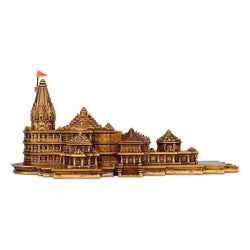1. Introduction
Banana fibre, also known as banana silk or Musa fibre, is a natural bast fibre extracted from the pseudostem of the banana plant (Musa spp.). While bananas are cultivated primarily for their fruit, the stalks or stems are often discarded post-harvest. Banana fibre is derived from this agricultural waste, making it a highly sustainable and zero-waste material.
2. Origin & Cultivation
-
Geography: India, Philippines, Indonesia, Thailand, and East Africa are the major producers.
-
India's Focus Areas: Tamil Nadu, Karnataka, Maharashtra, and Assam.
-
Banana Varieties Used: Abaca (Musa textilis) in the Philippines is the most well-known, but other edible banana varieties are also used in India.
3. Extraction & Processing
Banana fibre is obtained from the outer sheaths of the pseudostem through manual or mechanical retting and scraping. The quality of fibre varies depending on the layer it is extracted from:
-
Outer layers yield coarse fibre – ideal for ropes, mats, bags.
-
Inner layers produce softer, finer fibres – suitable for textiles and paper.
Steps in Processing:
-
Harvesting banana stems after fruiting
-
Stripping and scrapping fibre manually or via fibre extraction machines
-
Washing and drying
-
Spinning into yarn or processing into pulp (for paper)
4. Properties of Banana Fibre
|
Property |
Details |
|
Appearance |
Shiny, similar to bamboo or silk |
|
Texture |
Coarse to soft, depending on grade |
|
Strength |
High tensile strength |
|
Moisture Absorption |
Good absorbency |
|
Biodegradability |
100% biodegradable |
|
Dyeability |
Accepts natural and chemical dyes well |
|
Thermal Resistance |
Moderate insulation; breathable |
5. Applications
Banana fibre has versatile applications across industries:
Textiles:
-
Sarees, scarves, home linen
-
Blended with cotton, jute, silk, or polyester for enhanced properties
Handicrafts & Home Décor:
-
Rugs, mats, wall art, lampshades
Fashion & Accessories:
-
Bags, belts, footwear, wallets
Paper & Packaging:
-
Handmade paper, eco-friendly packaging, gift wrap
Industrial:
-
Automotive seat covers
-
Composite boards
-
Ropes and twines
6. Sustainability and Environmental Impact
Banana fibre aligns with circular economy principles due to its:
-
Waste utilization: Uses agricultural waste (pseudostems) that would otherwise be discarded
-
Low resource input: Requires no additional land, pesticides, or water to grow (piggybacks on banana fruit farming)
-
Biodegradability: Breaks down naturally without harming the environment
-
Livelihood impact: Provides rural employment, especially in India and Southeast Asia
7. Challenges
Despite its potential, banana fibre production and adoption face certain barriers:
-
Manual processing is labour-intensive and time-consuming
-
Limited mechanisation affects scalability
-
Low awareness among mainstream consumers
-
Inconsistent quality due to lack of standardisation
8. Market Trends & Innovations
-
Luxury brands and sustainable designers are increasingly exploring banana fibre blends
-
Startups in India and the Philippines are developing banana-based textiles and leather alternatives
-
Banana fibre sanitary napkins are gaining traction in rural health and hygiene initiatives
-
Banana paper is being adopted for eco-conscious stationery and premium packaging
9. Key Indian Players & Initiatives
-
Taragram: Pioneers in sustainable products
See Products: Taragram Banana Fibre Dustbin
Taragram Banana Fibre Pen Stand
See More Products
Similar platforms:
Fabartistry
Champs Agro Unit
-
Khadi and Village Industries Commission (KVIC): Training and capacity building
10. Conclusion
Banana fibre is not just a sustainable material—it's a regenerative resource that turns waste into value. With growing demand for ethical, biodegradable, and artisanal products, banana fibre stands out as a key ingredient in the future of eco-design, craft revival, and sustainable manufacturing.
Sustainably Yours, Since 1985.





